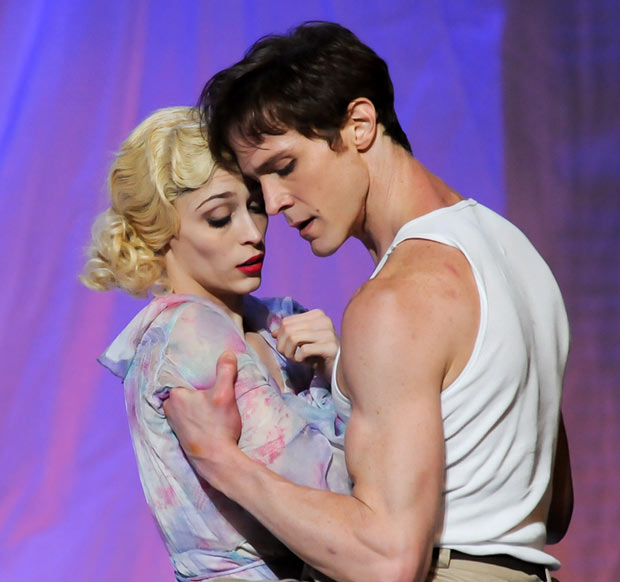
Pittsburgh Ballet Theatre
A Streetcar Named Desire
Pittsburgh, Benedum Center
10 March 2012
www.pbt.org
When you think of Tennessee Williams’ 1947 Pulitzer Prize-winning play A Streetcar Named Desire, it’s hard not to think of Elia Kazan’s 1951 film adaptation with Marlon Brando as Stanley Kowalski screaming “Hey Stella!” or Vivien Leigh as a glazed-eyed Blanche DuBois saying “Whoever you are, I have always depended on the kindness of strangers.” They have become indelible images of the silver screen. Like Kazan’s film, John Neumeier’s 1983 ballet version of Street Car in its premiere by an American company, Pittsburgh Ballet Theatre, delivered its own batch of indelible images.
In adapting the play into ballet form Neumeier centered the story on the Blanche character adding new scenes and a new narrative timeline to fill the character’s back story.
Told in flashback, the ballet began where Williams’ play ended with Blanche in a New Orleans mental institution.

Seated on a bed next to a closed suitcase PBT soloist, Eva Trapp, as Blanche appears to be anxiously awaiting someone or something. Her mind drifts and we begin to see the memories in her head played out in scenes of her wedding day and her encounters with a trio of men at the Flamingo Hotel representing her past illicit sexual encounters and unwanted voices in her head.
Neumeier’s characterization of Blanche in his ballet is in many ways like Williams’, only seemingly more troubled. She is haunted by a past where ghostly figures of her dead relatives and memories of past indiscretions invade her head and run roughshod over her psyche and any happy recollections she might have.
Trapp’s superb acting and dancing skills brought the fallen and eccentric Southern aristocrat, Blanche, to life as a character and Neumeier’s choreodrama with its mix of neo-classical ballet and jazz movement told her story in stunning detail.
The ballet’s first act, set to music by composer Sergei Prokofiev, bounced between Blanche’s memories of her wedding day at the DuBois’ ancestral home of Belle Reve, her husband Allan Gray’s betrayal and suicide by handgun and her encounters with the trio of men. The ever-present men beckoned her, including dancer Joseph Parr as a soldier who, with one of only two speaking roles in the ballet, taunted Blanche with lewd catcalls.
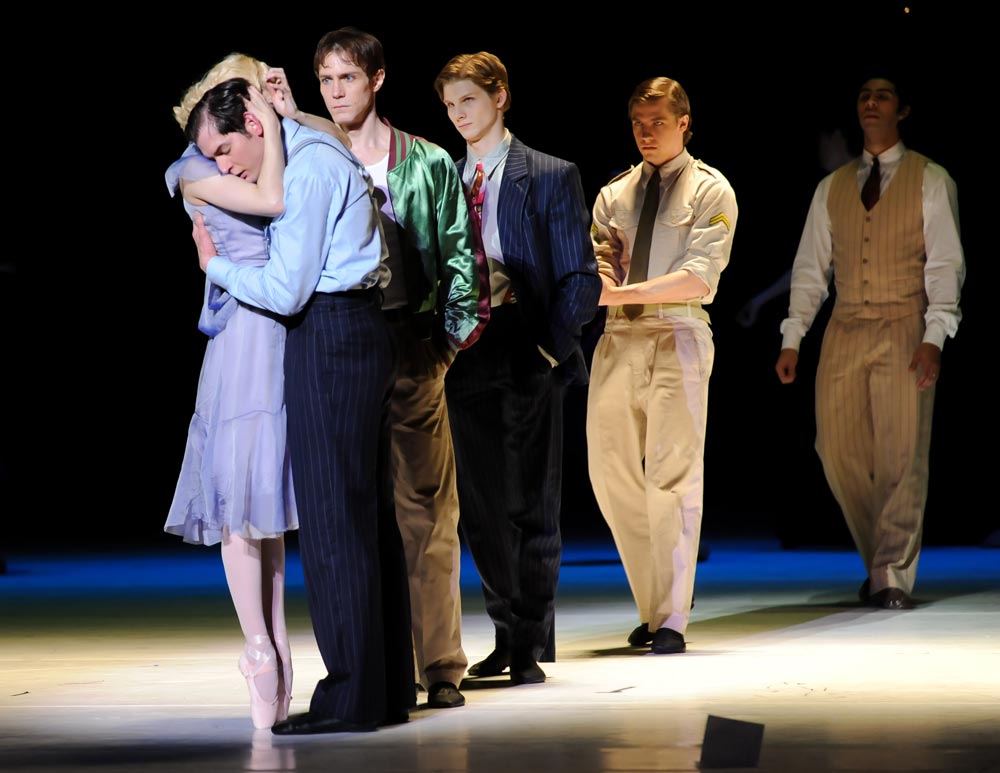
The wedding scenes at Belle Reve used every bit of the Benedum Center’s vast stage space creating a panoramic view of 25 characters moving about the stage each with his or her own distinct motivation.
Dancing in front of a backdrop of large columns with a crystal chandelier overhead, ghostly wedding guests in white face makeup and white formalwear costumes moved about while specters of Blanche’s dead relatives in Victorian-style black funeral garb eerily drifted about the stage; her mother veiled and in a bell-shaped gown seemingly floated on air from one spot to another.
The overall effect of Neumeier’s choreography and staging in these first act scenes in advancing the ballet’s storyline, not to mention their emotional and visual impact, was nothing short of masterful.
Minute details from the way dancers glanced at one another, gestured and even an incident where Trapp bumped into a ghostly mourner (Danielle Downey) knocking a wreath from her hand and absently stopping to pick it up and hand it back to the apparition all spoke volumes.
Of the plethora of metaphoric visual imagery contained in the ballet’s first act, including Trapp hands and arms gesturing a silent torrent of vitriol directed at dancer Christopher Budzynski as Gray, only the recurring reference to Gray’s suicide was overdone. The repeated sound of a gun blast and Budzynski collapsing to the stage floor then instantly popping back up to repeat the action multiple times became almost comical.
Act two of the ballet danced to music by composer Alfred Schnittke picked up where Williams’ play begins with a pre-institutionalized Blanche arriving in New Orleans to stay with her younger sister, Stella and, brother-in-law, Stanley.
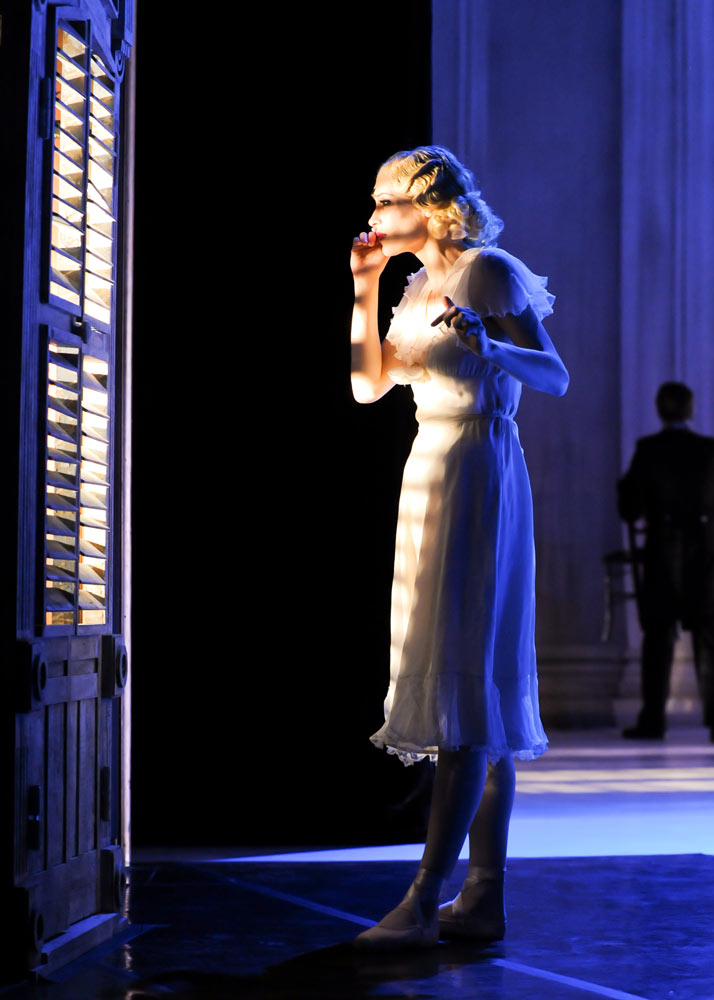
Instead of trying to recreate the look and feel of New Orleans with stage sets and drops, Neumeier used PBT’s corps de ballet to create a human representation of the city where the characters inhabiting it, such as jazz musicians, artists, socialites, mothers and more, represented the sound, spirit and hustle and bustle of the city.
The ballet’s storyline in act two followed more closely that of Williams’ play with a few exceptions, such as substituting Stanley and his friend Mitch’s pastime of playing cards with them boxing; the new imagery advancing the idea of Stanley as a primal being driven by animalistic urges.
PBT soloist Robert Moore as Stanley was superb in the role, not only embodying the character’s physical prowess, but also his brutish personality.
The act, which had the feel of an old movie, was highlighted by a pas de deux between Trapp and Moore dancing to music from a vintage radio. The pair alternately switched stations on the radio to music that complimented their personalities; melodic classical music for Blanche and raucous jazz for Stanley. The pas de deux had Moore tossing Trapp around like a rag doll and the sexual tension between the characters was palpable. Also of note was a pas de deux between Trapp and dancer Stephen Hadala as Mitch, in which Blanche rode an emotional roller coaster reacting to Mitch’s outpouring of affections for her. Her happiness in the scene vanquished when a jealous Stanley, who now joined the ghostly trio of men that haunted Blanche, told Mitch of her sordid past, thus squelching their budding relationship.
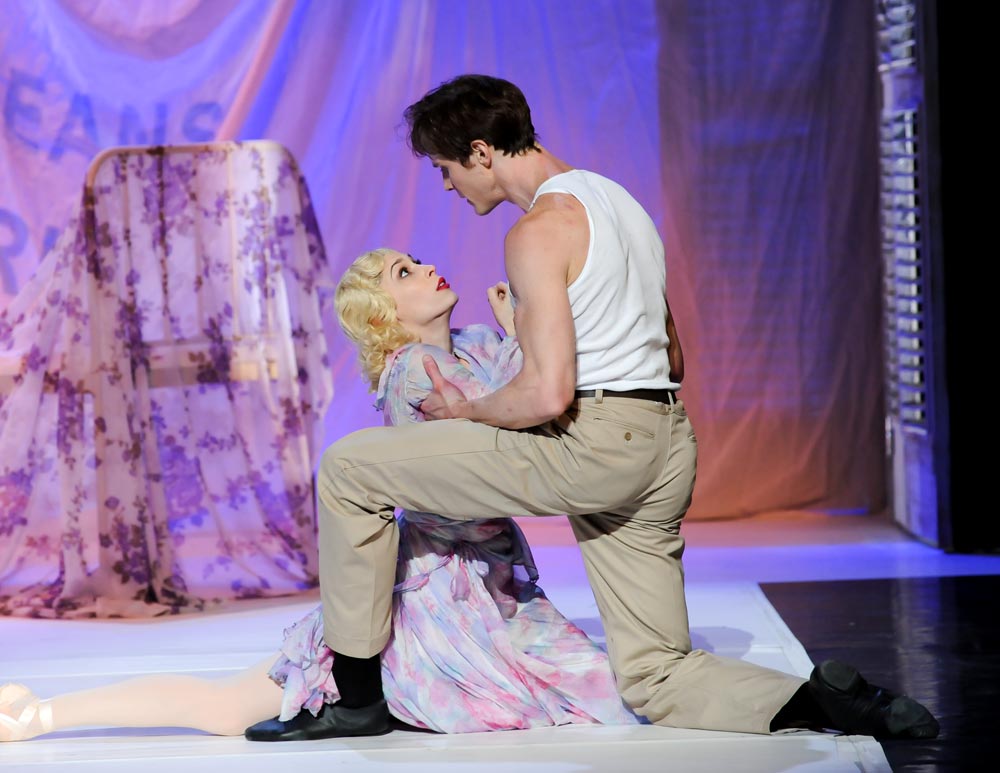
The ballet reached its climax in a brutally physical and emotionally riveting rape scene where Stanley dominated a helpless Blanche. The chilling scene ended with Trapp lying curled up in the fetal position under a bed while a triumphant Moore pounded his chest like a gorilla.
While Neumeier’s choreography for Street Car lacked virtuosic technical dancing and any substantial group dance numbers, the ballet proved exquisite without them and PBT’s well-rehearsed dancers were outstanding in the Neumeier ballet classic.







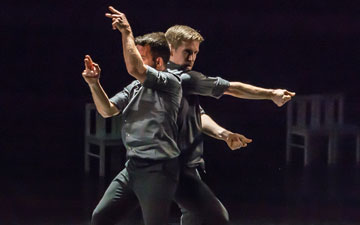
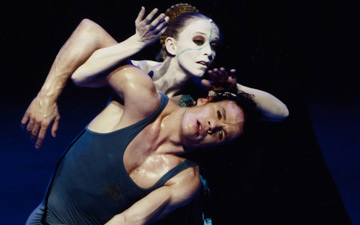
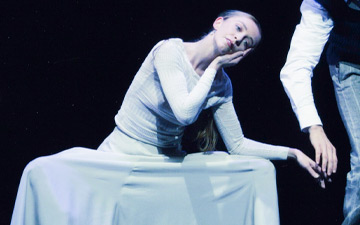
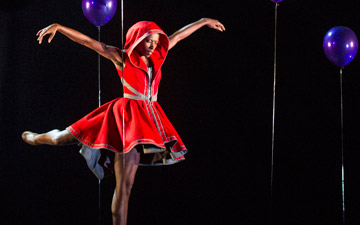



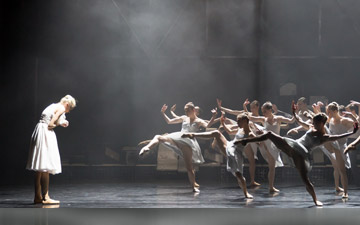
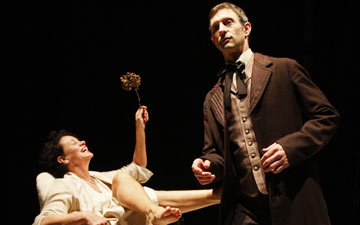
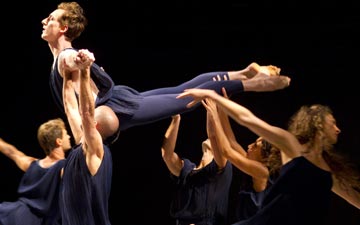
You must be logged in to post a comment.